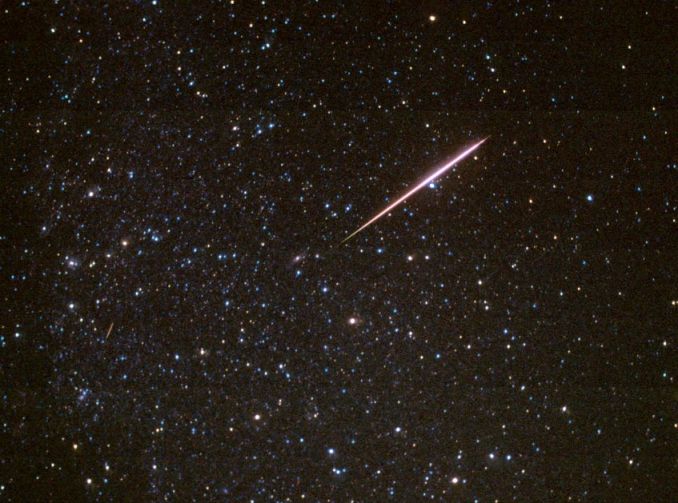
|
Credit: Rick Scott &
Joe Orman
Explanation:
Like falling
stardust,
cast off bits of comet
Swift-Tuttle hurtle through
the upper atmosphere about this time each year as planet Earth passes
near the comet's orbital path.
For the northern hemisphere, this
regular
celestial display is known as the annual
Perseid
meteor shower -- so named because the meteor trails
all appear traceable to a common "radiant point" in the
constellation Perseus.
This gorgeous wide-angle
photo from the 1997 shower
captures a
20-degree-long
fireball meteor
and another, fainter Perseid
meteor trail in a rich area of the northern
summer Milky Way.
A labeled version
is available identifying
the shower's radiant point,
surrounding deep-sky objects, and constellations.
Easy to view (just go outside and look up!), the
Perseid meteor
shower will peak this weekend with maximum rates anticipated
early Sunday morning, August 12, for eastern North America.
Despite interfering moonlight,
last year's faithful
Perseid watchers
were rewarded with bright meteors and extensive displays of
the
northern lights.
|
January February March April May June July August September October November December |
| ||||||||||||||||||||||||||||||||||||||||||||||||
NASA Web Site Statements, Warnings, and Disclaimers
NASA Official: Jay Norris. Specific rights apply.
A service of: LHEA at NASA / GSFC
& Michigan Tech. U.
Based on Astronomy Picture
Of the Day
Publications with keywords: comet - Perseids - meteor shower
Publications with words: comet - Perseids - meteor shower
See also:
